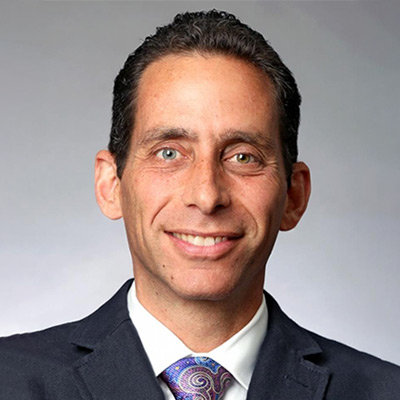Progressive collapsing foot deformity is a complex condition that has been at the center of ongoing debate and discussion. Over the past decade, experts in the field worked to create a new classification system outlining several different subtypes of the collapsing arch to help standardize approaches to the associated deformities.

Justin K. Greisberg, MD
“Each collapsed arch has a unique structure and pattern of failure, leading to multiple treatment approaches,” says Justin K. Greisberg, MD, Chief of the Foot and Ankle Service in the Department of Orthopedic Surgery at NewYork-Presbyterian/
For the past three years, Dr. Greisberg has directed an Instructional Course Lecture on surgical treatment of the progressive collapsing foot at the annual meeting of the American Academy of Orthopaedic Surgeons. “For decades the universal term for a collapsing arch has been posterior tibial tendon dysfunction,” notes Dr. Greisberg. “Since the 1980s, the theory has been that attenuation of the tibial tendon led to arch collapse, with a staging system and treatments that addressed this problem as a single disease. Over the years, orthopedic surgeons in this specialty recognized that posterior tibial tendon dysfunction is not the result of one process, but rather it is polymorphic.”
Over the years, orthopedic surgeons in this specialty recognized that posterior tibial tendon dysfunction is not the result of one process, but rather it is polymorphic.
— Dr. Justin Greisberg
“In some cases, the posterior tibial tendon might not even be part of the process. So we became frustrated using this terminology as it did not encompass the full understanding of the condition. And this is why experts in this specialty sought to achieve consensus on a more apt name for the condition – progressive collapsing foot deformity – and to begin to address the need for a new classification system. While the new system has its drawbacks, from the outset, the new nomenclature clarifies what we are dealing with – a collapsing foot,” he says.

X-ray showing collapsing foot deformity
According to Dr. Greisberg, surgery for progressive collapsing foot deformity is not a one-surgery-fits-all approach. In the Instructional Course Lecture, Dr. Greisberg focuses on the classification diagnosis and the variability associated with the collapsing foot. “The underlying problem in these patients is a failure of soft tissues, including the posterior tibial tendon and often the spring ligament and other ligaments that hold the arch together. At this time, we do bone fusions or bone osteotomies as ways to compensate for the affected ligaments, which is not a perfect solution.”
“The collapsed foot can be associated with a number of deformities, including hindfoot valgus, midfoot abduction, forefoot varus, and valgus ankle instability, with treatment options that either address the pathologies or the primary ligamentous dysfunction,” explains Dr. Greisberg. “These include tendon transfer for posterior tibialis tendon dysfunction and spring ligament reconstruction to realign the foot to offset the forces leading to deformity. Flexibility, location of the deformity, and patient factors drive our treatment decisions.”
Dr. Greisberg, an expert in complex reconstructive surgeries of the foot and ankle, notes that newer technologies are now becoming available to help reconstruct the spring ligament, a key stabilizer of the medial arch that is linked to the development of progressive collapsing foot deformity. In his research, Dr. Greisberg has been pursuing techniques to try to rebuild the ligaments. “In our Instructional Course Lecture, we discuss the uncertainties of current spring ligament reconstruction techniques using suture material to rebuild the ligaments,” says Dr. Greisberg. “However, as a primary solution, suture repair may not be as durable as natural ligament healing. The suture will eventually give way because it is unable to regenerate any low-level damage that occurs from wear and tear.”
The anatomy of the foot also poses challenges to ligament reconstruction. “In the foot, the sustentaculum tali of the calcaneus where the spring ligament attaches is very thin,” adds Dr. Greisberg. “So using a hamstring tendon or another large tendon to reconstruct the spring ligament is difficult. There's just not enough physical space with our current technology to attach it to the bone in a durable way. In a cadaver model, I have looked at attaching the ligament on the talar neck instead of the calcaneus, in order to affect a more durable reconstruction. Mechanically I can do that, but is that good enough to reconstruct the spring ligament? That is the question we are now seeking to answer.”
Dr. Greisberg emphasizes the need for clinical studies in large cohorts to be able to refine treatment options for progressive collapsing foot deformity focused on techniques and technologies currently available to reconstruct the spring ligament and other soft tissue structures to optimize outcomes.




